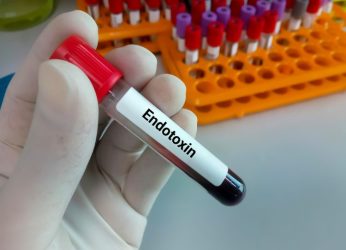
The limulus amebocyte lysate (LAL) assay for bacterial endotoxin testing (BET) is currently facing some of its greatest challenges as a reagent in the pharmaceutical industry, according a paper published in the Journal of Applied Bioanalysis. The author highlighted key obstacles and offered potential opportunities for the future.
Challenges
The first current challenge the author discussed was the supply of materials and conservation of resources for endotoxin testing. This is because of the source of the reagent being derived from a natural source, therefore impacting populations of crab species used for testing.
Since the 1990s, the annual harvest of Chinese horseshoe crab (Tachypleus tridentatus) for biomedical purposes has dropped from 600,000 to 100,000 in 2015, the paper noted.
Another current challenge of endotoxin testing is the cost of instruments and reagents. Quantitative methods offer a greater amount of information compared to the traditional gelation method, which has a low equipment cost. Yet the former method requires instruments that often need to be sourced from a variety of countries.
Other limitations include that there are only a few access countries for the global LAL and tachypleus amoebocyte lysate (TAL) product. Therefore, political climate, geographical location, and regional regulations can limit or cut off supply of endotoxin reagent.
Strict guidelines mean that innovations in testing methods often do not become a part of the guidance and regulations for years after the changes are proposed.
One example of this is the recombinant Factor C (rFC) recombinant alternative to LAL. Although it was developed in the early 2000s and was accepted as compendial by the Ph.Eur., for instance, the United States Pharmacopeia (USP) has not followed in making recombinant LAL a compendial method of endotoxin detection. While this does lead to consistency in the testing methods, as the environment changes, needed changes in the endotoxin testing world often get delayed, the author reported.
Future prospects for the use of endotoxin testing in pharma
On the other hand, endotoxin testing does harbour opportunities to overcome these challenges.
One is moving past resource limitations. Farming horseshoe crabs in a controlled environment is one approach, according to Francis, author of the paper. It provides a controlled, synthetic reagent for endotoxin testing. One-factor synthetic alternatives use a synthetic version of the “Factor C” protein that binds to endotoxin. Three-factor synthetic alternatives utilise the complete cascade pathway found within natural LAL.
The paper stated that the two major factors limiting the universal adoption of synthetic LAL are uncertainty in equivalency from the regulatory bodies plus the cost of the product compared to natural LAL.
Yet as confidence grows in the synthetic product, the regulatory bodies will continue to adopt the alternative method, the author predicted. The European Pharmacopoeia has already made one-factor alternatives compendial. As more products are manufactured, efficiency in manufacturing will increase, and prices will lower too.
The second set of opportunities is overcoming costs of reagents and instruments. With new portable instruments being developed, quantitative testing can be provided to areas that only had access to qualitative testing. Using the properties of polarised light, a newer generation of instruments can make absorbance readings with a reduced amount of reagent. This conservation leads to a greater usage efficiency of the volume of reagent.
The final set of opportunities regarding endotoxin testing in the pharmaceutical industry is greater communication between reagent manufacturers, users and regulatory bodies.
The author concluded that with recent beneficial dialogue occurring between major pharmacopeia and the endotoxin manufacturers, especially in the advancements of synthetic reagents, optimism is increasing to see a greater dialogue and cooperation between all parties involved.
The post What is the future of LAL assays in endotoxin testing? appeared first on European Pharmaceutical Review.
